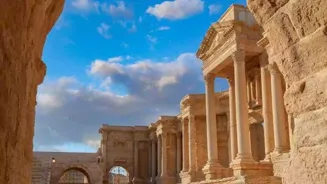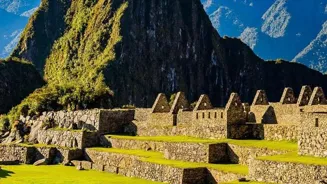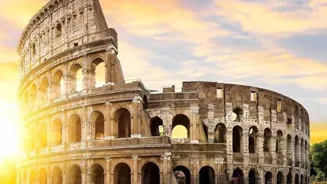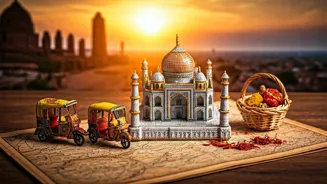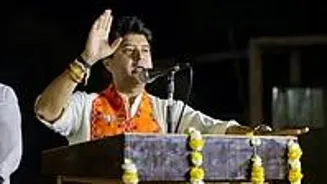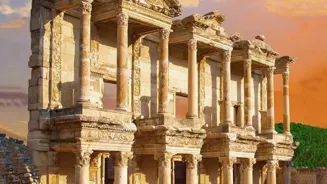Discover India's History Through 10 Must-See National Monuments! Dive into architectural wonders and cultural heritage
India, a land steeped in history and culture, boasts a plethora of national monuments
that whisper tales of bygone eras. For history aficionados seeking to immerse themselves in the country's rich past, here's a curated list of ten must-see monuments that promise to transport you back in time.
The Taj Mahal, Agra
This iconic white marble mausoleum, a symbol of eternal love, stands as a testament to Mughal emperor Shah Jahan's devotion to his wife, Mumtaz Mahal.
Beyond its breathtaking beauty, the Taj Mahal showcases intricate craftsmanship and architectural brilliance, reflecting a blend of Persian, Islamic, and Indian styles. A visit during sunrise or sunset offers a mesmerizing experience, as the changing light casts a magical glow on the monument.
Take your time to admire the pietra dura inlay work, the calligraphy, and the overall symmetry that makes the Taj Mahal a true wonder of the world. It’s a must to understand the sheer scale!
Red Fort, Delhi
This historical fort, once the residence of Mughal emperors, is a majestic reminder of their power and grandeur. With its imposing red sandstone walls, intricate gateways, and elegant palaces, the Red Fort offers a glimpse into the opulent lives of the Mughal rulers.
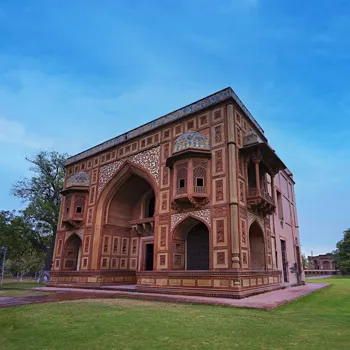
Explore the Diwan-i-Aam (Hall of Public Audience) and Diwan-i-Khas (Hall of Private Audience) to imagine the bustling court life that once unfolded within these walls.
Don't miss the sound and light show in the evening, which brings the fort's history to life with captivating storytelling and vibrant visuals. It truly brings history to life for the modern generation.
Qutub Minar, Delhi
This towering minaret, a UNESCO World Heritage Site, showcases the architectural prowess of the Delhi Sultanate. Built in the 12th century, the Qutub Minar stands as a symbol of the establishment of Muslim rule in India.

Marvel at its intricate carvings, the calligraphy inscriptions, and the sheer height of the structure.
Explore the surrounding complex, which includes the Quwwat-ul-Islam Mosque, one of the earliest mosques built in India, and the Iron Pillar, a marvel of ancient metallurgy that has withstood the test of time without rusting. It is a testament to ancient techniques and artistry.
Hawa Mahal, Jaipur
Also known as the "Palace of Winds," this unique structure is a prime example of Rajput architecture. Built in the 18th century, the Hawa Mahal was designed to allow royal ladies to observe street festivities while remaining unseen.
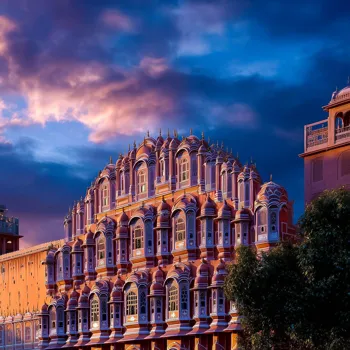
With its intricate latticework windows and honeycomb facade, the palace provides a stunning view of the city. Climb to the top for a panoramic vista of Jaipur and imagine the royal women enjoying the vibrant scenes below.
The intricate design is not only beautiful but also functional, providing ventilation and keeping the palace cool.
Amber Fort, Jaipur
Perched atop a hill, the Amber Fort is a magnificent blend of Rajput and Mughal architectural styles. Explore the opulent palaces, courtyards, and gardens within the fort complex.
Don't miss the Sheesh Mahal (Palace of Mirrors), adorned with countless tiny mirrors that create a mesmerizing play of light. An elephant ride to the fort's entrance is a popular experience, offering a regal way to ascend to this historical gem.
Discover the history and cultural significance behind each element of this magnificent fort.
Khajuraho Temples, Madhya Pradesh
These temples are renowned for their intricate sculptures, which depict various aspects of life, including religious beliefs, daily activities, and, most famously, erotic art. Built by the Chandela dynasty between the 9th and 12th centuries, the Khajuraho Temples are a UNESCO World Heritage Site.
While the erotic sculptures often steal the spotlight, it is important to appreciate the artistic skill and cultural context in which these sculptures were created. The temples represent the epitome of medieval Indian art and architecture. It is about the art and culture showcased in stone.
India's national monuments offer a captivating journey through the annals of history, showcasing the architectural brilliance, cultural diversity, and artistic heritage of the nation. These monuments serve as a reminder of the country's rich past and provide invaluable insights into the lives of those who came before us. For history buffs, a visit to these sites is not just a sightseeing trip but a deeply enriching experience.
These sites are more than just old buildings; they tell the stories of emperors, artisans, and everyday people who shaped the country's destiny. They showcase various architectural styles, reflecting the diverse influences that have shaped India over centuries.
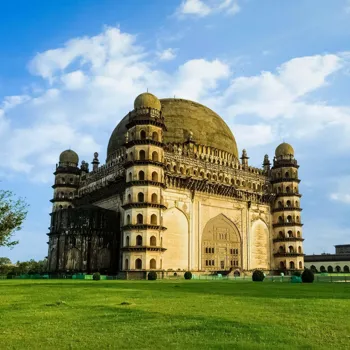
From the grandeur of the Mughal empire to the artistic finesse of the Rajput kingdoms, each monument has a unique tale to tell.
Preserving these monuments is crucial for future generations.
It allows them to connect with their heritage and understand the values and traditions that have shaped their identity. Responsible tourism plays a critical role in conservation efforts. Visitors can contribute by respecting the sites, following guidelines, and supporting local communities.
Exploring India's national monuments is like turning the pages of a history book. Each monument has a story to tell, and each visit is a chance to learn something new. So, pack your bags, grab your camera, and embark on a journey through time to discover the wonders of India's historical treasures.
In conclusion, India's national monuments are not just tourist attractions; they're living textbooks that offer a window into the past. For history buffs, these ten sites are just the beginning. India is filled with countless other monuments.
Furthermore, delving into the history of these structures offers a deeper understanding of the social, political, and economic conditions that prevailed during their construction. Knowing this creates a whole new layer of depth when exploring.
So remember to bring an open mind and a thirst for knowledge when visiting these historical masterpieces. They remind us of the past.


